Zion National Park being such a busy tourist hotspot, we took a hike at the north-western part of the park: the relatively unknown but beautiful Kolob Canyons. Here we found no crowds, a refreshing creek, Navajo Sandstone walls in the most impressive red colors and a beautiful natural feature at the end of the trail.
Taylor Creek Trail
Location: Kolob Canyons, Zion National Park, Utah
Start/end: Taylor Creek Trailhead
Distance: 5.2 miles ( 8,4 km) in and out
Elevation gain: 450 ft (137 m)
Time: 3 hrs
Hiked: August 2017
Kolob Canyons
Zion’s Kolob Canyons form an isolated area in the Zion Wilderness, located about 40 miles north of the famous Zion Canyon, and 17 miles south of Cedar City. In my experience this part of Zion is so far apart from the main canyon, you might as well consider it a different park. It has none of the tourism, shuttle buses and lodgings you encounter in Zion Canyon. It has more the feel of a State Park instead: isolated, quiet and, though maybe just a bit less spectacular, a great place to hike.
A five-mile scenic drive, just off Interstate 15 (exit 40) along the Kolob Canyons Road brings you to the main viewpoint and access to the trails.
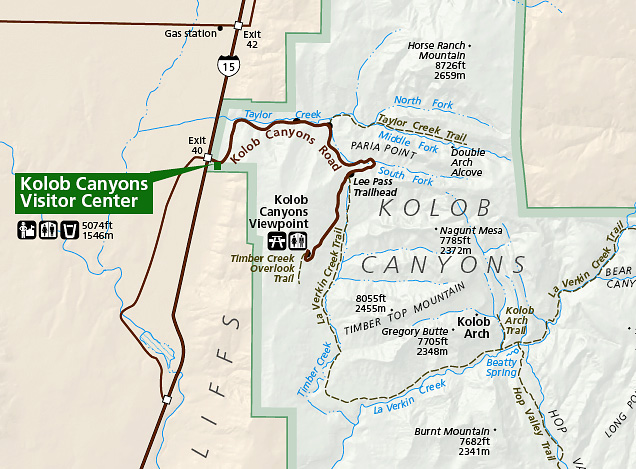
There are no campgrounds in Kolob. Some tent and RV sites are located north of Kolob in the towns of Kanarraville and Cedar City. But we used the Point Supreme Campground in Cedar Breaks National Monument as our basecamp, less than an hour’s drive to the Kolob Canyons Visitors Center.
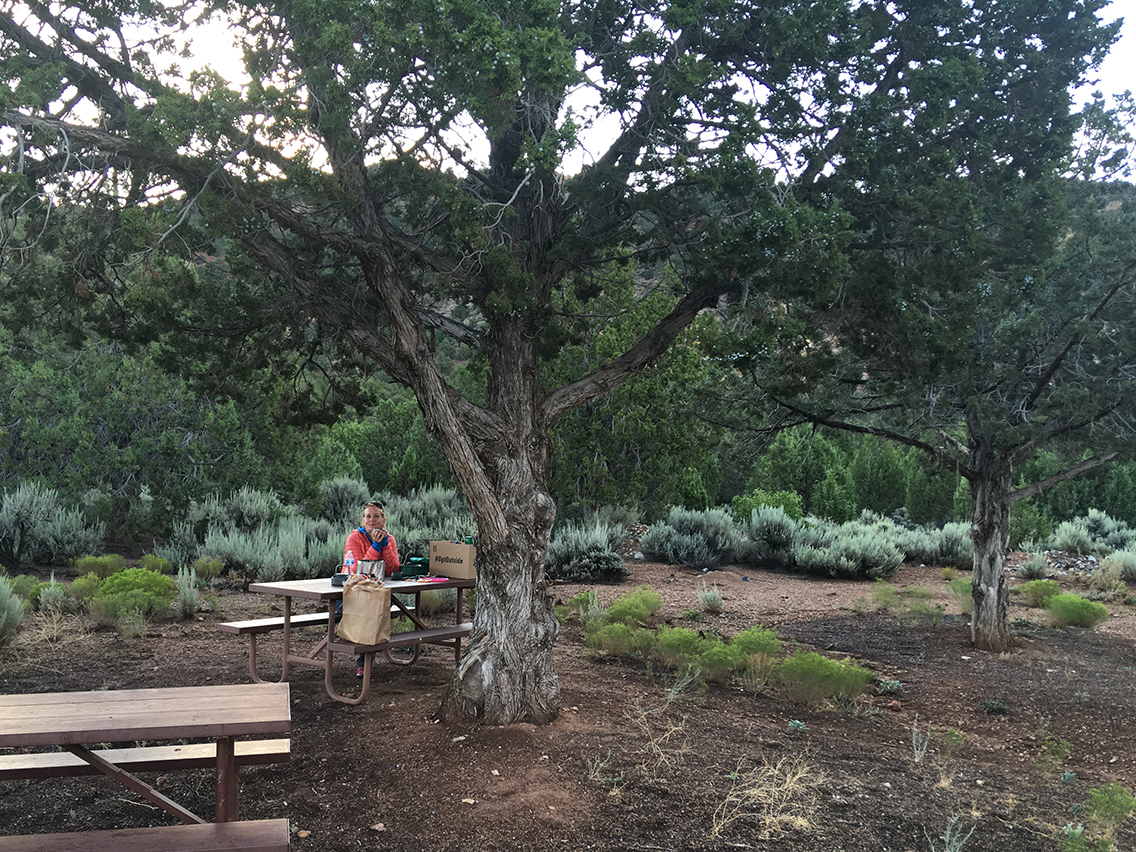
We arrived at Kolob Canyons long before the Visitors Center opened, so we had our breakfast in the cool morning under a Juniper tree. When the Center opened (8 am), we filled up on water and had a talk with the ranger. When I asked about possible hazards from the waters of Taylor Creek, she replied: ‘It’s a creek, not a river!’
The Kolob Canyon Road and Viewpoint
The Taylor Creek trailhead is 2 miles east of the Visitors Center at the scenic Kolob Canyon Road. Before hitting the trail, we drove all of the 5 miles to the Kolob Canyons Viewpoint. Here you can see about 5 of the ‘fingers’ that form the canyons.
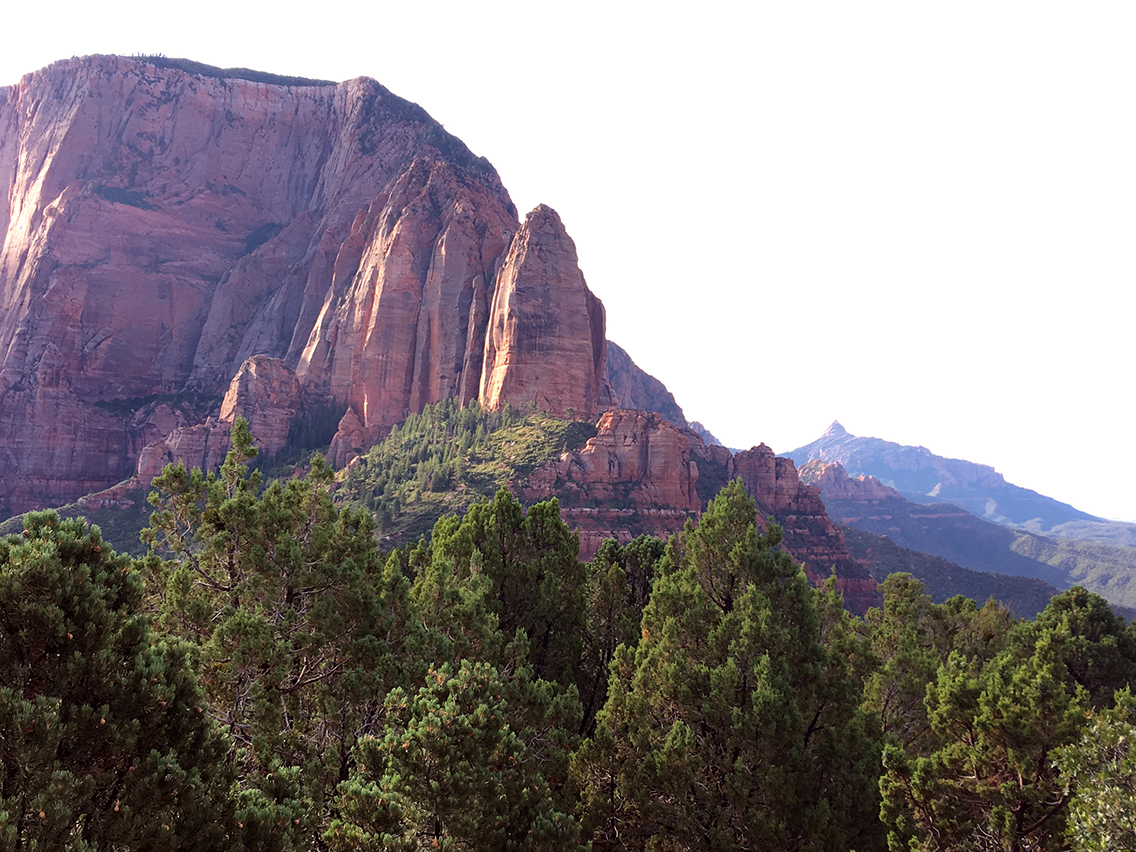
Taylor Creek Trail
At the trailhead at 9 am, it was already beginning to get quite hot and sunny. But the trail took us to the more shady creek after a number of steep steps down. There we followed a mostly sandy trail along the shallow waters of the Middle Fork of Taylor Creek. The only two other hikers we met at the trailhead had vanished into the Zion Wilderness very soon, so we had the trail all to ourselves.
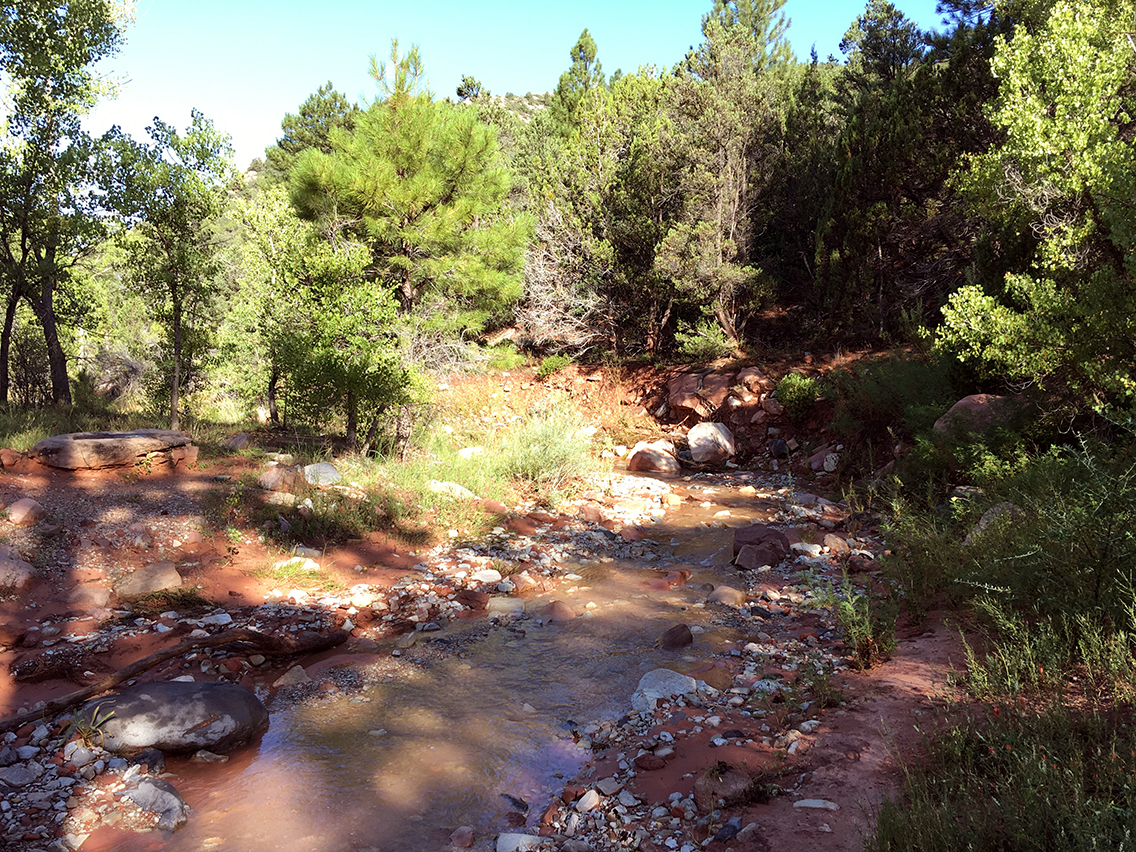
Homesteading Cabins
Along the trail there are two homesteading cabins from 1930’s. The first is the Larson Cabin on the north side of the creek.
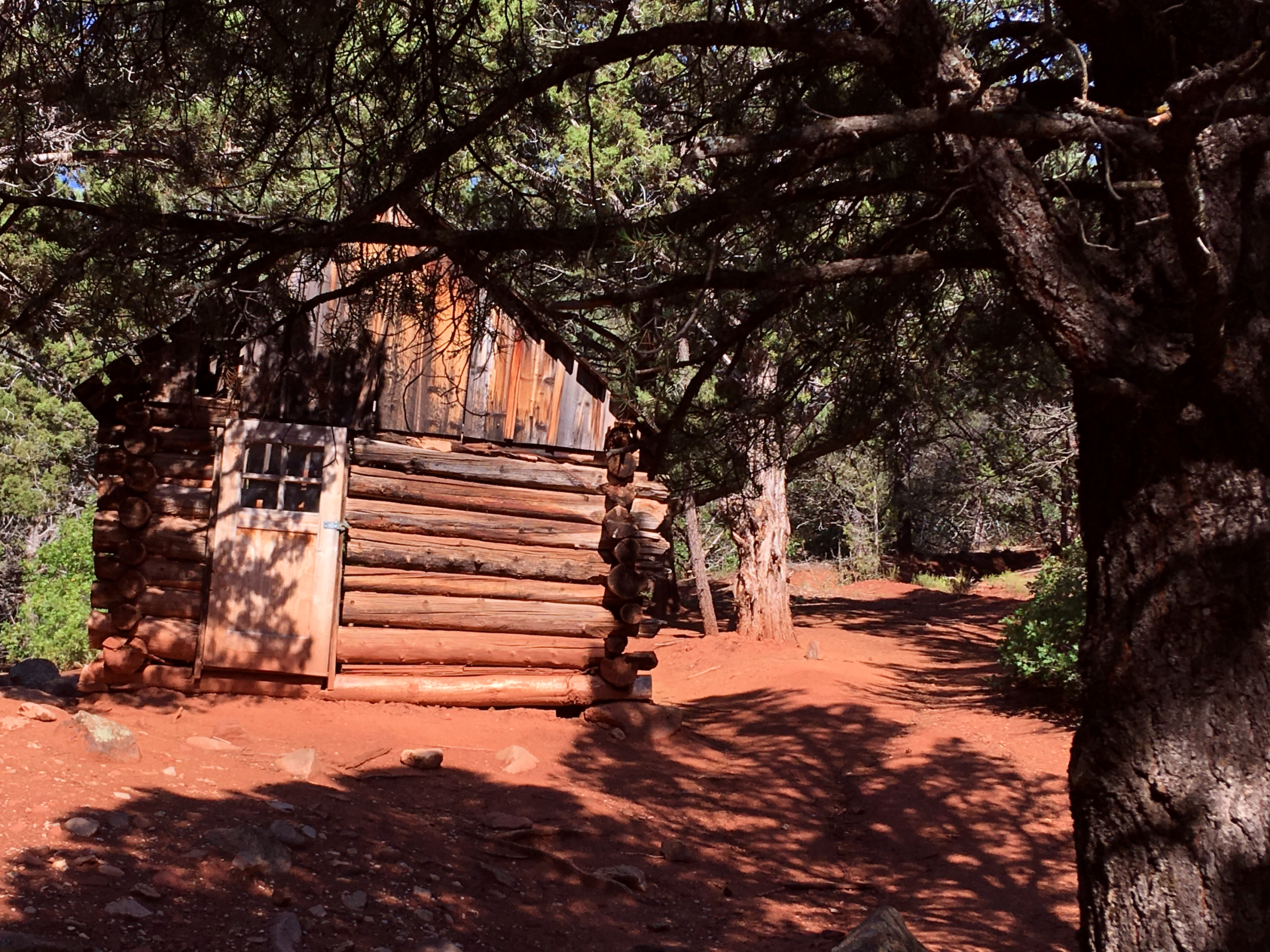
We took a moment to look inside the (locked) cabin, where we saw an old bed taking up almost all the room under a crashed-in roof. It was hard to imagine someone actually living in such a small house, in such a remote place.
About half a mile upstream there is a second cabin: the Fife Cabin. This one was also built in the 1930’s, long before the Kolob Canyons were added to Zion National Park in 1956.
For Europeans the 1930’s are such recent history (I have lived in houses built in the 1660’s), that preserving these cabins as ‘archeological sites’ feels unusual and strange. But it also reminds me of how young the western U.S. states actually are (not forgetting that the native Americans were here long before).
Taylor Creek Walls and Crossings
Almost a mile from the trailhead, we passed the high butte of Paria Point (see post picture above) and the scenery changed as we walked into the ‘finger’ canyon between 1,700 feet high Navajo Sandstone walls.
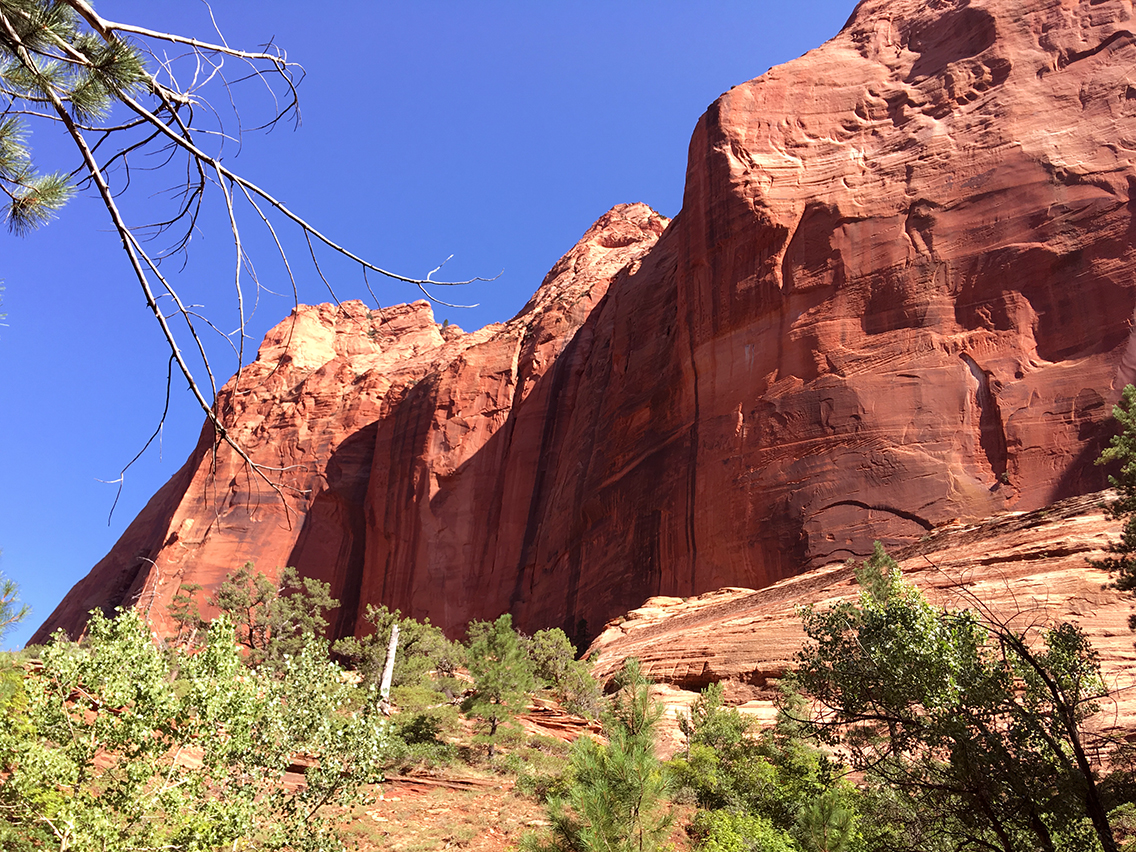
The red rock walls looked so smooth and polished. Various cracks in the walls reminded us of faces, like the Simpsons, Jesus Christ and a Mountain Lion, among others. Looking down and in front of us, we saw butterflies, lizards, beautiful red flowers and cacti.
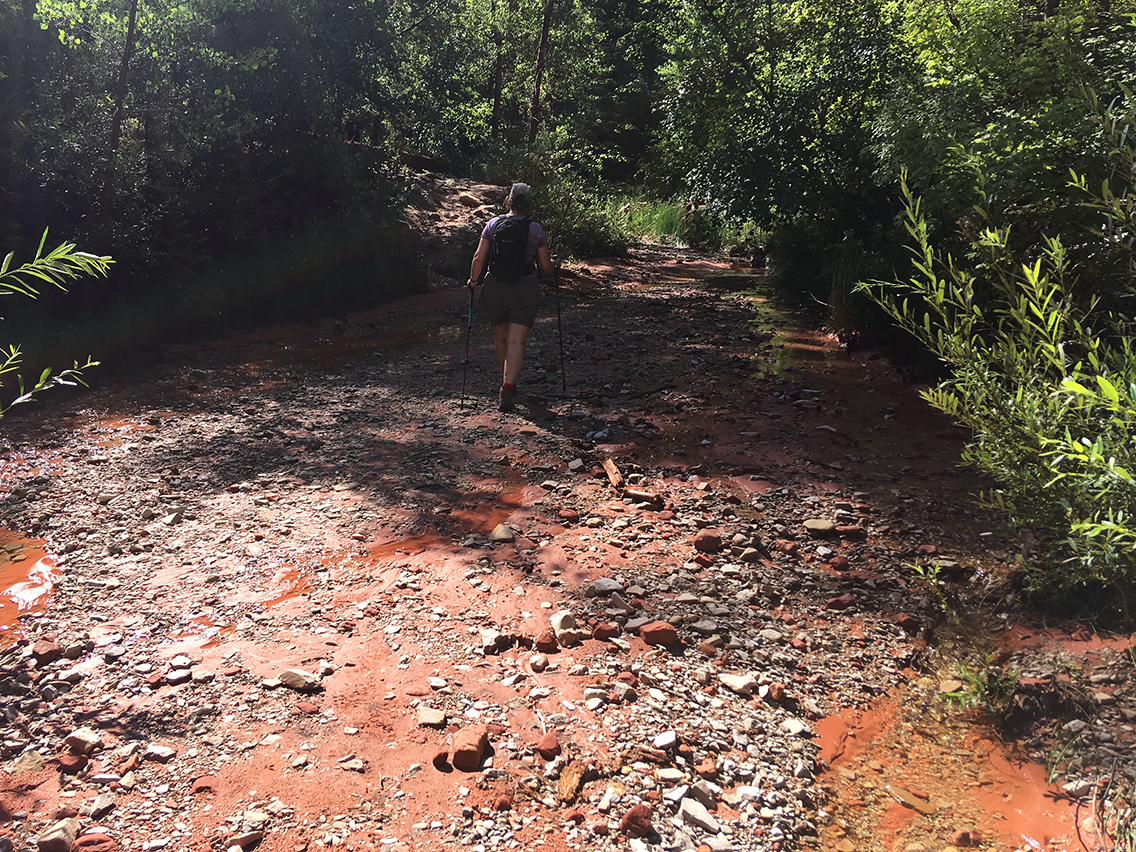
After a while we noticed we were continually crossing the creek and we started counting. Until the end of the trail we counted 53 crossings, but we lost count somewhere (sources state that there are 63 crossings one way). No wet feet though, the water was never higher than a few inches.
Double Arch Alcove
The vertical walls were getting narrower as we arrived at the Double Arch Alcove. From behind high trees a massive wall marked the end of the trail.
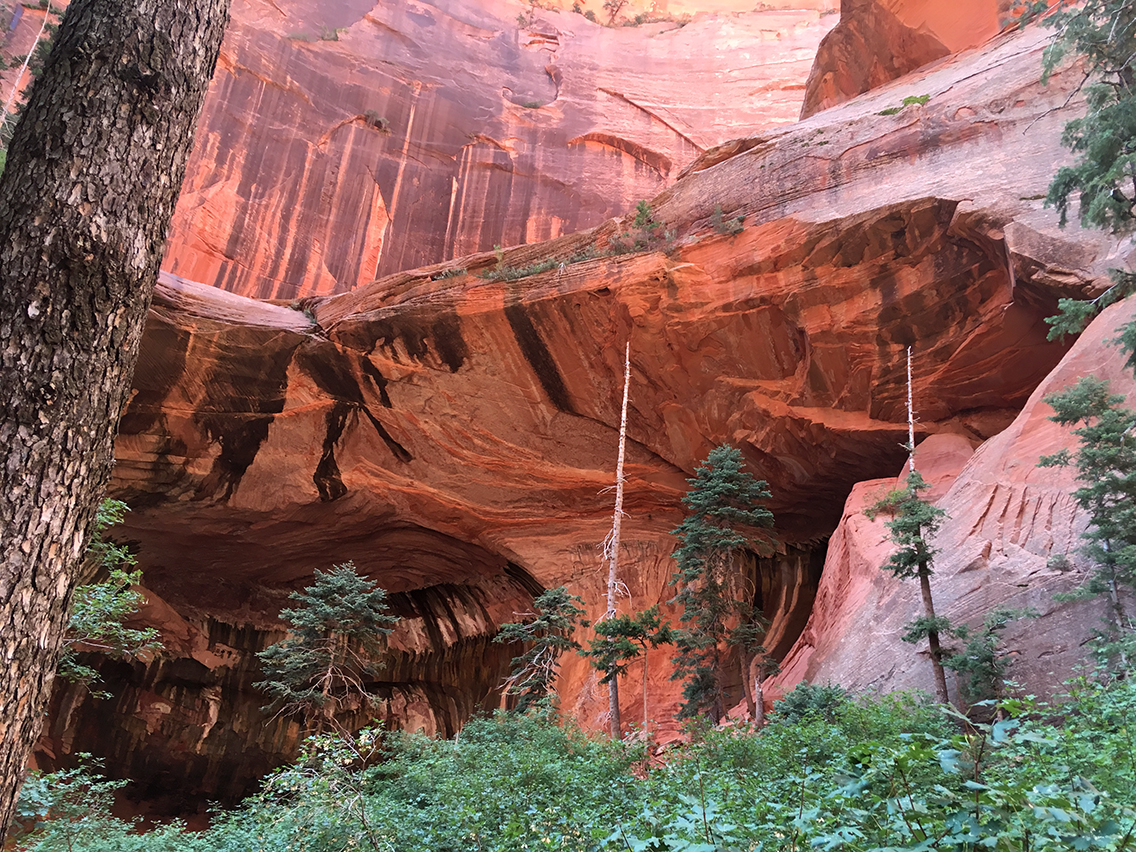
Behind the trees we encountered a big alcove, all purple and red. As we neared, we heard echoes of our steps and voices.
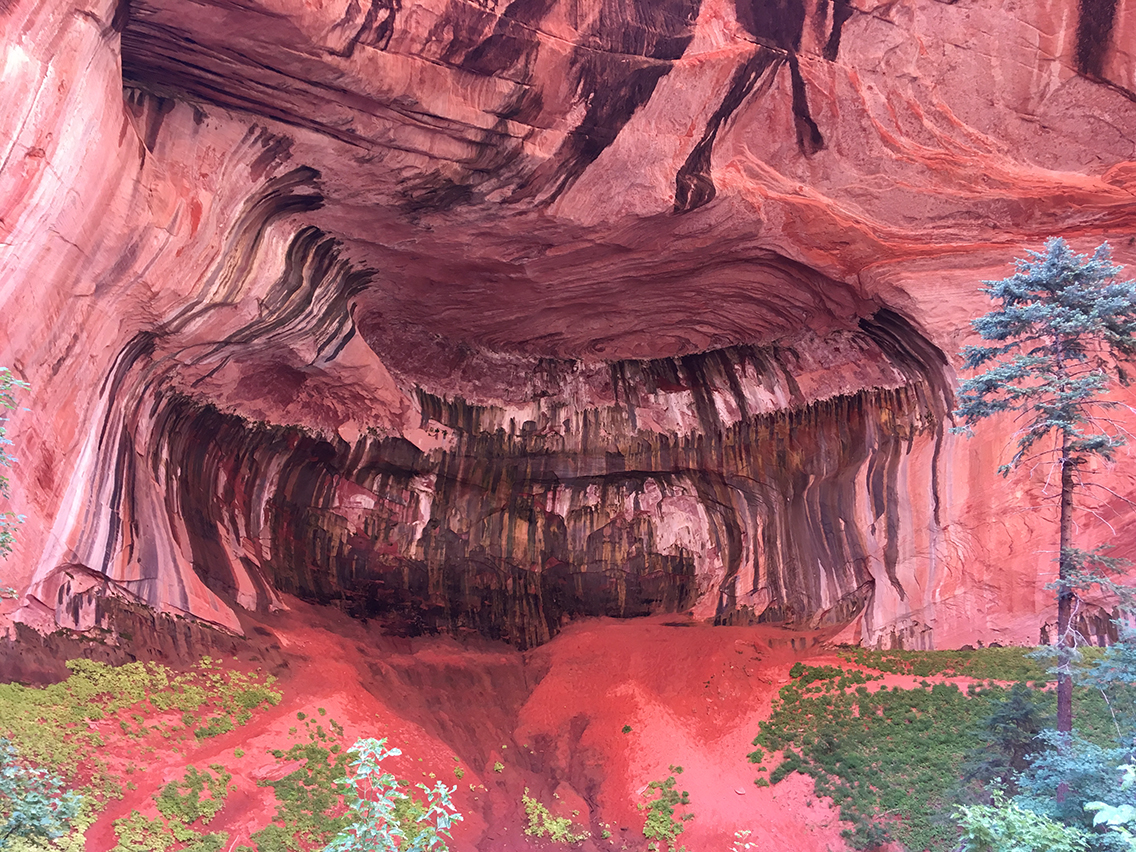
An arch that lies higher above the alcove, was barely noticeable.
There was an intense silence, accentuated by the echoing call of a raven, and the water dripping from the alcove’s walls. A magical moment.
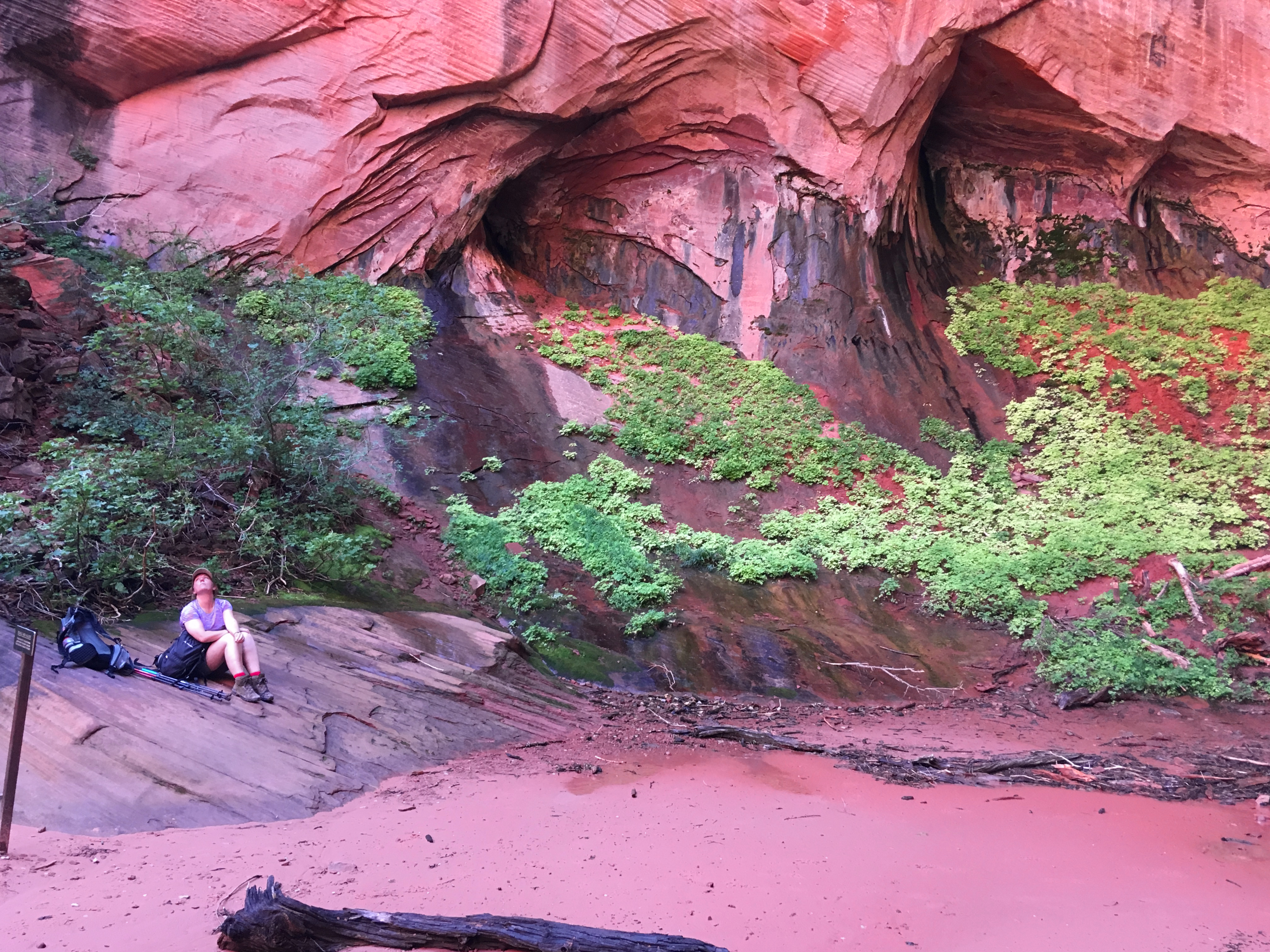
Silence has an echo too
We hardly saw anyone on the trail. Only at the alcove we met a father with two daughters who drove all the way from Minnesota.
When we came back to the trailhead at noon, we saw more people, who were all just starting the hike – at the hottest hours of the day. We were glad we started early.
All in all this was a beautiful and memorable hike, much better than Zions famous Angels Landing trail we did the two days later.
After the trail we drove to Cedar City. In the small historic town district (which is a few blocks on Main street) we spend the afternoon at Centro Pizza, very much recommended for food and service. We asked for a cappuccino, but they didn’t have coffee. Our waiter Wyatt ran to the nearby coffee house and came back to hand us two hot cups for free: ‘It’s a gift from me, a gift from America, to you’.

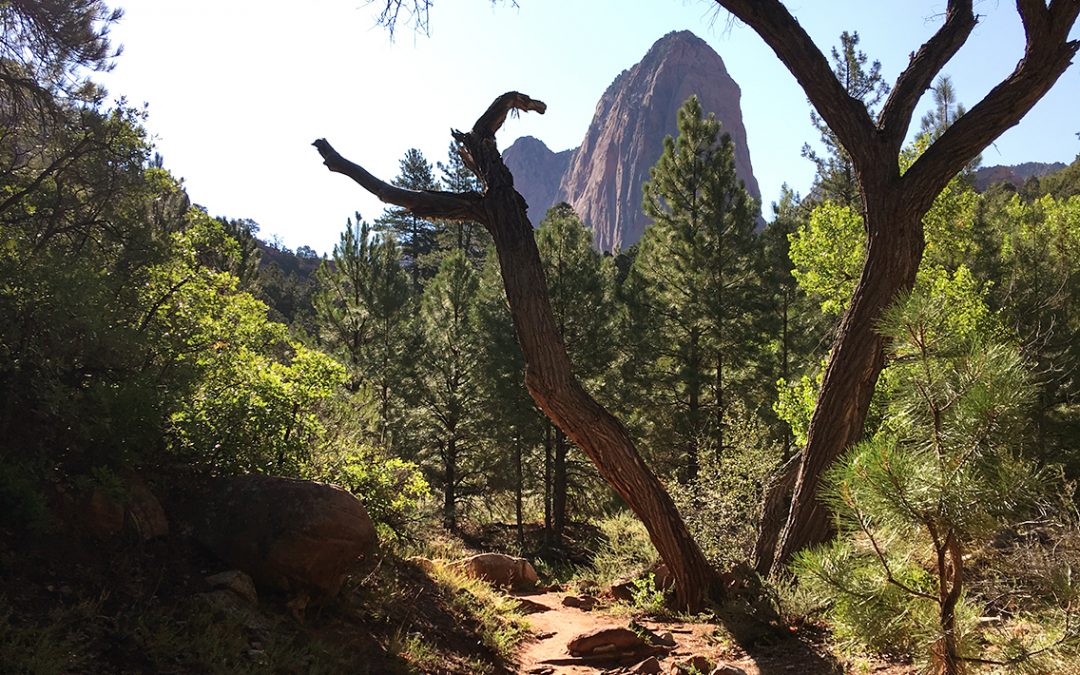
0 Comments